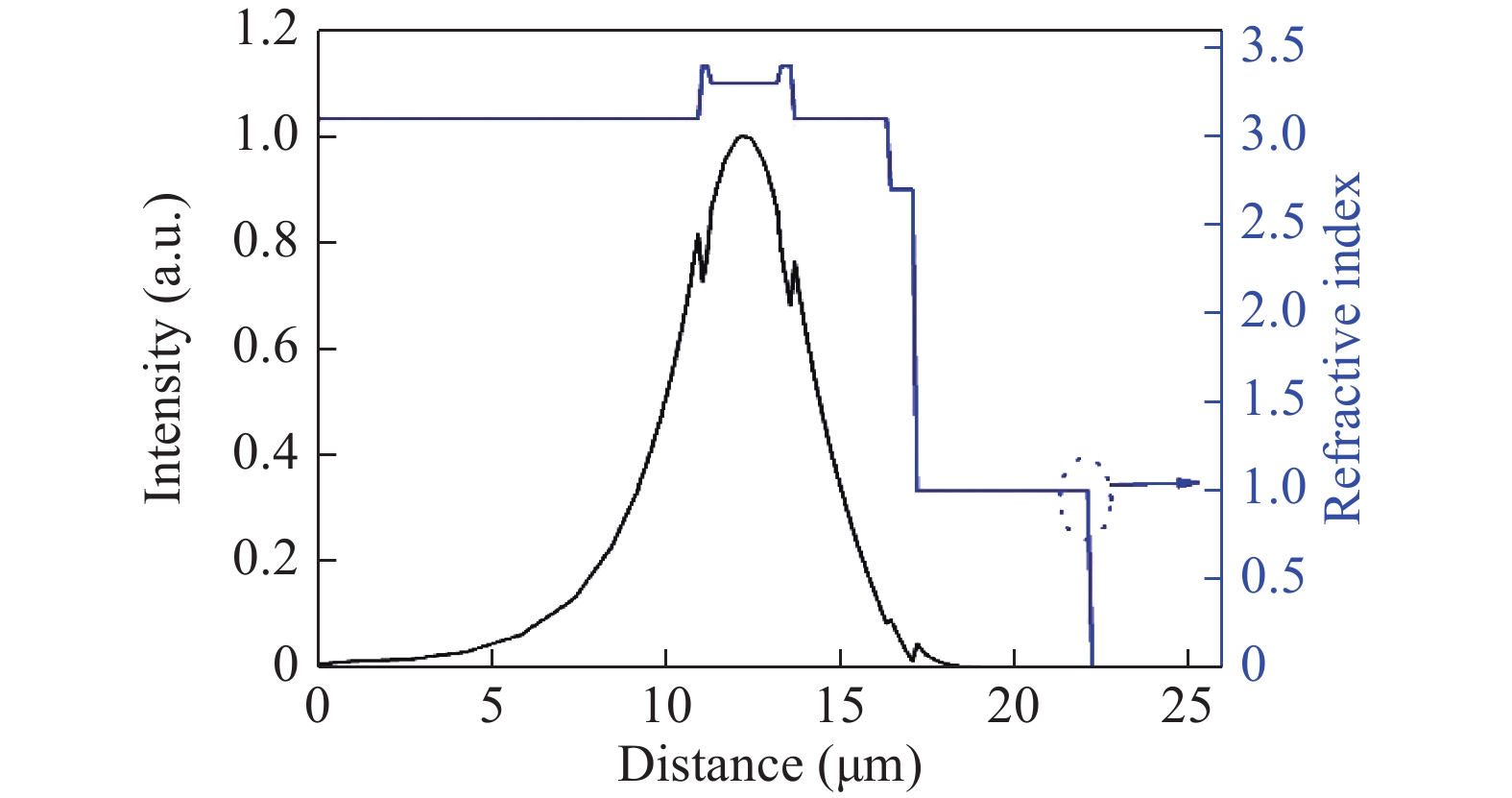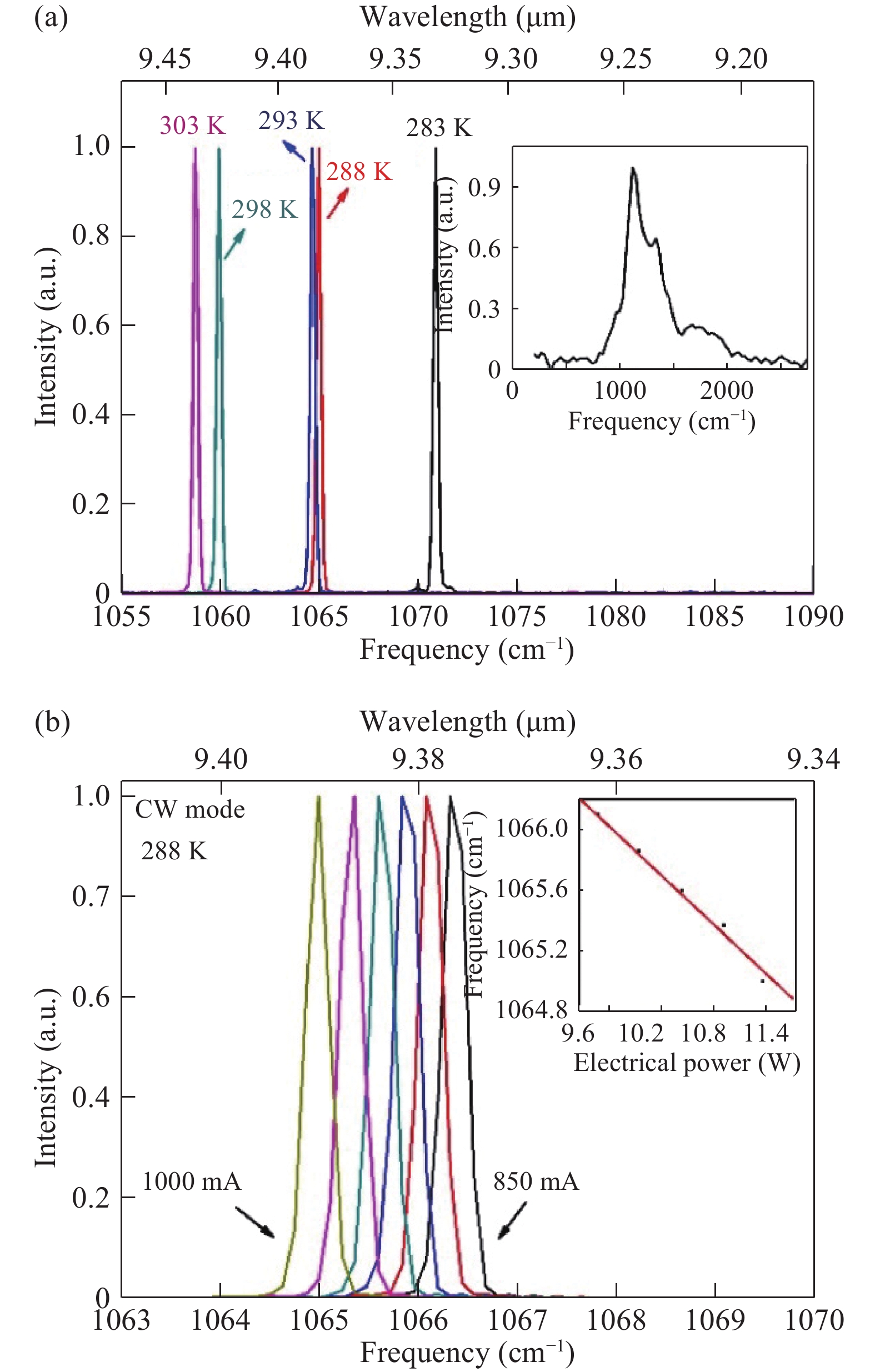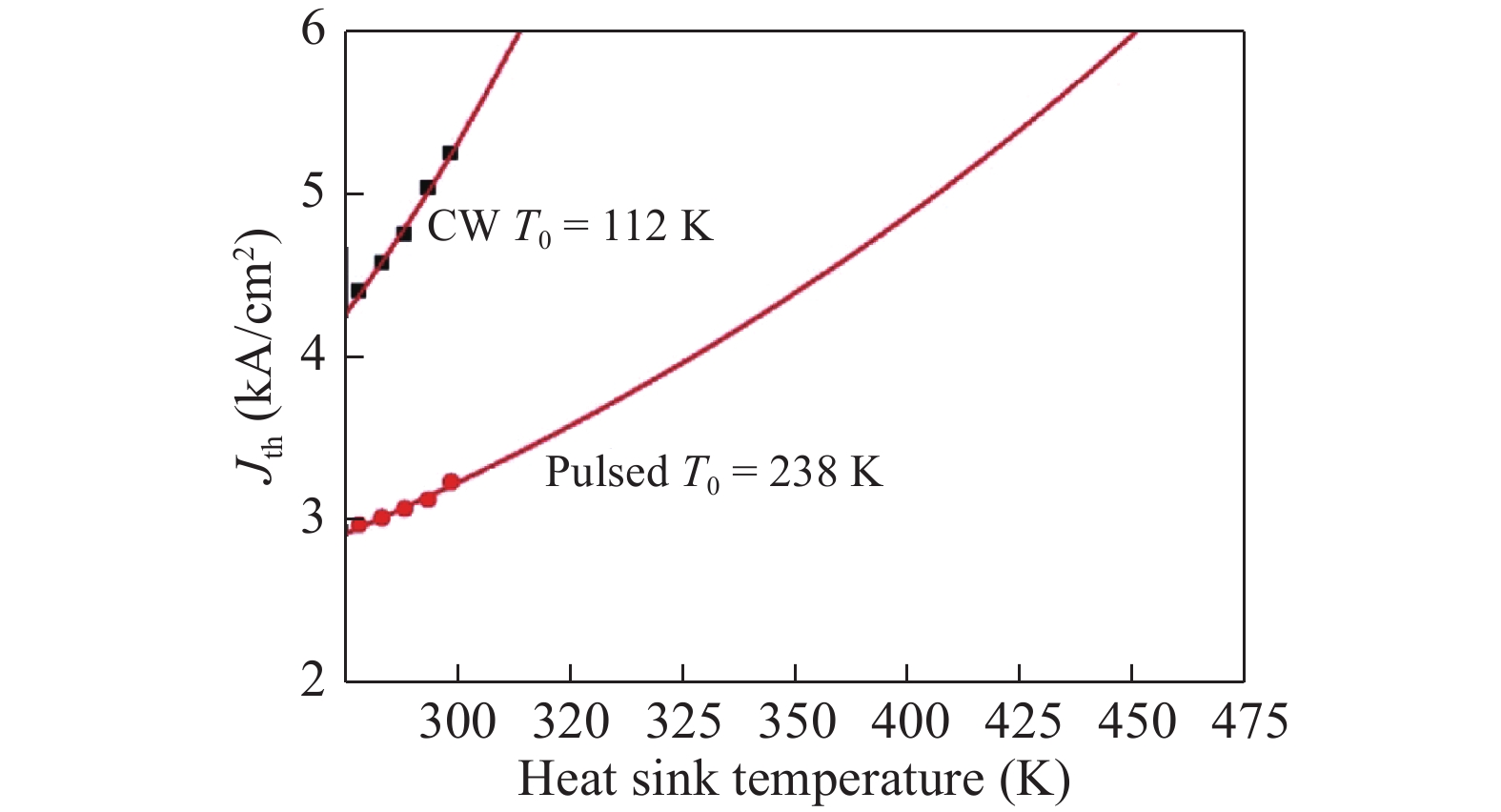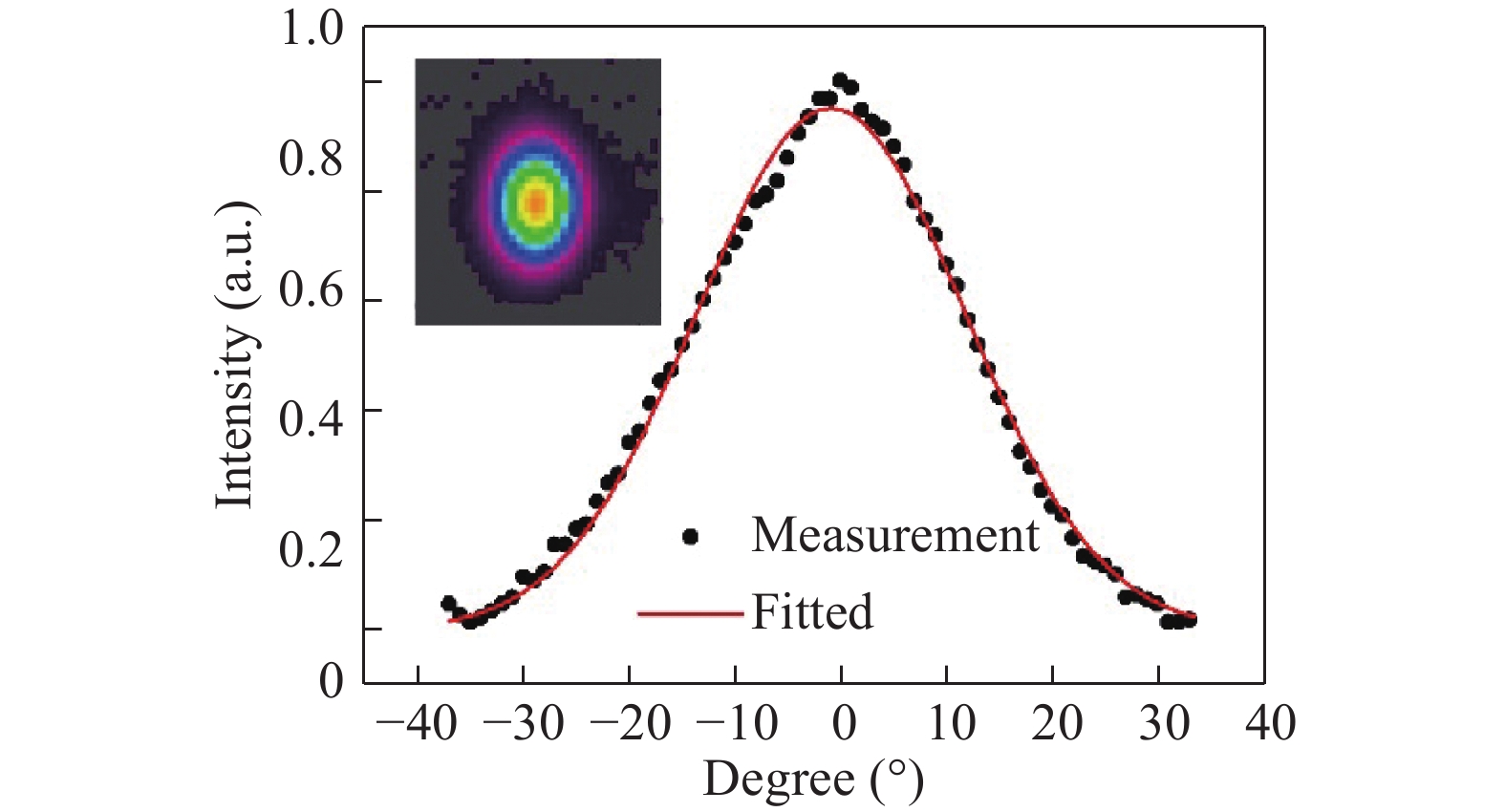| Citation: |
Chuncai Hou, Yue Zhao, Jinchuan Zhang, Shenqiang Zhai, Ning Zhuo, Junqi Liu, Lijun Wang, Shuman Liu, Fengqi Liu, Zhanguo Wang. Room temperature continuous wave operation of quantum cascade laser at λ ~ 9.4 μm[J]. Journal of Semiconductors, 2018, 39(3): 034001. doi: 10.1088/1674-4926/39/3/034001
****
C C Hou, Y Zhao, J C Zhang, S Q Zhai, N Zhuo, J Q Liu, L J Wang, S M Liu, F Q Liu, Z G Wang. Room temperature continuous wave operation of quantum cascade laser at λ ~ 9.4 μm[J]. J. Semicond., 2018, 39(3): 034001. doi: 10.1088/1674-4926/39/3/034001.
|
Room temperature continuous wave operation of quantum cascade laser at λ ~ 9.4 μm
DOI: 10.1088/1674-4926/39/3/034001
More Information
-
Abstract
Continuous wave (CW) operation of long wave infrared (LWIR) quantum cascade lasers (QCLs) is achieved up to a temperature of 303 K. For room temperature CW operation, the wafer with 35 stages was processed into buried heterostructure lasers. For a 2-mm-long and 10-μm-wide laser with high-reflectivity (HR) coating on the rear facet, CW output power of 45 mW at 283 K and 9 mW at 303 K is obtained. The lasing wavelength is around 9.4 μm locating in the LWIR spectrum range. -
References
[1] Faist J, Capasso F, Sivco D L, et al. Quantum cascade laser. Science, 1994, 264: 553 doi: 10.1126/science.264.5158.553[2] Vitiello M S, Scalari G, Williams B, et al. Quantum cascade lasers: 20 years of challenges. Optics Express, 2015, 23: 5167 doi: 10.1364/OE.23.005167[3] Kazarinov R F, Suris R. Possibility of amplification of electromagnetic waves in a semiconductor with a superlattice. Soviet Phys, 1971, 5: 707[4] Kastalsky A, Goldman V, Abeles J. Possibility of infrared laser in a resonant tunneling structure. Appl Phys Lett, 1991, 59: 2636 doi: 10.1063/1.105922[5] Razeghi M, Lu Q Y, Bandyopadhyay N, et al. Quantum cascade lasers: from tool to product. Optics Express, 2015, 23: 8462 doi: 10.1364/OE.23.008462[6] Kosterev A A, ad Tittel F K. Chemical sensors based on quantum cascade lasers. IEEE J Quantum Electron, 2002, 38: 582 doi: 10.1109/JQE.2002.1005408[7] Liu C W, Zhai S Q, Zhang J C, et al. Free-space communication based on quantum cascade laser. J Semicond, 2015, 36: 094009 doi: 10.1088/1674-4926/36/9/094009[8] Kumar C, Patel C K N, Lyakh A. High power quantum cascade lasers for infrared countermeasures, targeting and illumination, beacons and standoff detection of explosives and CWAs. Proc SPIE, 2015, 9467: 946702 doi: 10.1117/12.2178050[9] Bai Y, Bandyopadhyay N, Tsao S et al. Room temperature quantum cascade lasers with 27% wall plug efficiency. Appl Phys Lett, 2011, 98: 181102 doi: 10.1063/1.3586773[10] Lu Q Y, Bai Y B, Bandyopadhyay N, et al. 2.4 W room temperature continuous wave operation of distributed feedback quantum cascade lasers. Appl Phys Lett, 2011, 98: 181106 doi: 10.1063/1.3588412[11] Lyakh A, Maulini R, Tsekoun A, et al. Tapered 4.7 μm quantum cascade lasers with highly strained active region composition delivering over 4.5 watts of continuous wave optical power. Opt Express, 2012, 20: 4382 doi: 10.1364/OE.20.004382[12] Beck M, Hofstetter D, Aellen T, et al. Continuous wave operation of a mid-infrared semiconductor laser at room temperature. Science, 2002, 295: 301 doi: 10.1126/science.1066408[13] Darvish S, Slivken S, Evans A, et al. Room-temperature, high-power, and continuous-wave operation of distributed-feedback quantum-cascade lasers at λ~9.6 μm. Appl Phys Lett, 2006, 88: 201114 doi: 10.1063/1.2205730[14] Baranov A N, Bahriz M, Teissier R. Room temperature continuous wave operation of InAs-based quantum cascade lasers at 15 μm. Opt Express, 2016, 24: 18799 doi: 10.1364/OE.24.018799[15] Fox M. Optical properties of solids. Am J Phys, 2002, 70: 1269[16] Troccoli M, Wang X, Fan J. Quantum cascade lasers: high-power emission and single-mode operation in the long-wave infrared (λ > 6 μm). Opt Eng, 2010, 49: 111106 doi: 10.1117/1.3498778[17] Troccoli M, Lyakh A, Fan J, et al. Long-wave IR quantum cascade lasers for emission in the λ = 8–12 μm spectral region. Opt Mater Express, 2013, 3: 1546 doi: 10.1364/OME.3.001546[18] Liang P, Liu F Q, Zhang J C, et al. High-power high-temperature continuous-wave operation of quantum cascade laser at λ~4.6 μm without lateral regrowth. Chin Phys Lett, 2012, 29: 074215 doi: 10.1088/0256-307X/29/7/074215 -
Proportional views





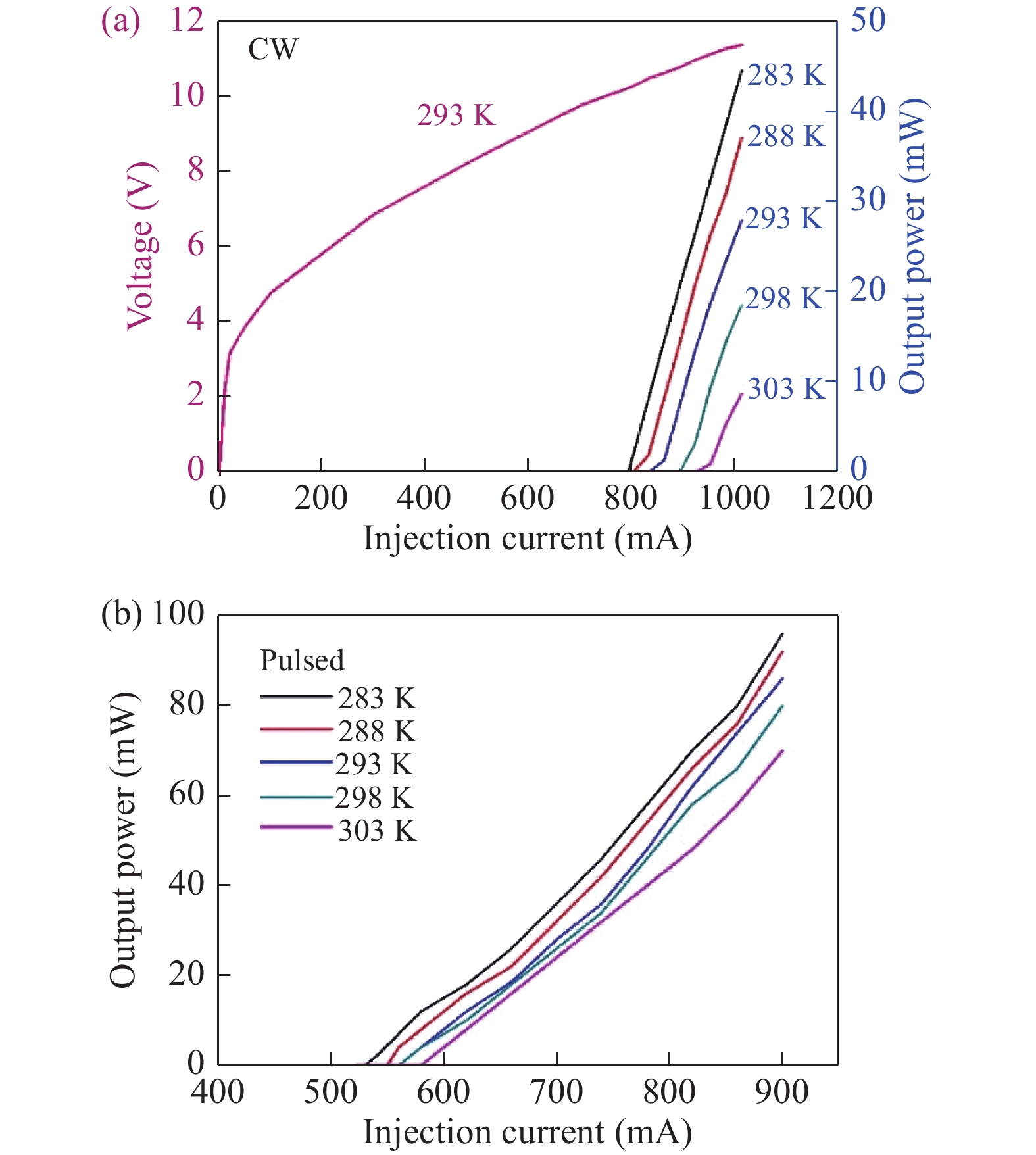
 DownLoad:
DownLoad:
